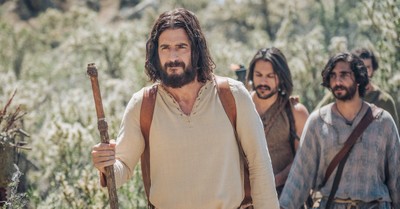The Biggest Post-Pandemic Expectation
- Published Mar 16, 2021
The end is near. The light can be seen at the end of the tunnel. You can’t wait for what will return to normal. No more masks, no more social distancing, the return to fully open weekend services,
… just don’t add ending your online presence to the list.
Numerous surveys have demonstrated that there is a very clear expectation that churches will have an ongoing online presence at least as high in quality as they have now. Countless numbers of churches were forced online a year ago; the expectation is that churches will stay there.
Not solely there, of course, but the expectation that you will continue to be available online will be assumed. And not just for services—for everything you’ve been offering online.
This brings up a challenging dynamic that is not going anywhere—namely, that every church is now going to have to be multisite. Just not in the geographic sense.
Many of you know that Mecklenburg Community Church moved away from the physical multisite approach to church growth just before the pandemic hit. It was a planned, calculated, strategic move for us based on the new digital reality and what it means for engagement. We no longer perceived that the primary barrier to church growth was geographic in nature. It was digital. We realized that the internet is our main venue, our main campus if you will, for outreach. And increasingly for many other aspects of our mission.
We fully anticipate that when we reopen our physical campus (we’ve been closed throughout the pandemic for weekend, in-person services), the online campus will continue to be our largest venue. So, you could say we are still a multi-site church—it’s just that one campus is physical and the other is digital. And going forward, we will need to treat them not only as two campuses (which we always have) but now – accelerated by the pandemic – as two different services.
Let me tell you what I mean.
The other day one of my sons was in a conversation with a group of men in our church (both of my sons are pastors at our church), and one of the men had some interesting things to say about our online campus. I’m going to have paraphrase from what was relayed, but in essence the man said:
In years past I would visit the online campus from time to time, and it was okay. I mean, it was one of the weekend services filmed and put online. It wasn’t as good as being there. And you could tell the sound and mixing wasn’t the best for internet consumption. It couldn’t be—it wasn’t filmed or designed for the internet. It was a captured live event. You also knew you were watching a filmed service. The message was filmed being given to that service’s crowd. Now granted, it was about as good of a filmed service you could watch. But man, I love what we’re doing now. Everything about it assumes that I’m watching it like I am—online! The sound and light and mix is perfect for the internet. The creativity of the worship and the arts, the nature of the presentation, the way the message is given as if just to me! I mean, it’s like he’s talking directly to me!
And he’s right.
When the pandemic hit, we made sweeping changes to our online campus. We staffed the chatroom more fully than ever before, assigning some staff to be virtual greeters, others to be moderators and responders, and then a third group were pastors serving in a pastoral role. Just like we have a Guest Services team for weekend services, we have a Guest Services team for each online campus service.
We overhauled sound and mixing and production values and abilities. We changed the way we filmed and engaged people in light of knowing everyone was online, and we created content to that end. The way worship was led and presented changed. It became more intimate, less like a filmed service for an auditorium and more presented directly to a viewer.
Even the way we invite people to worship takes into account they are either alone, or with a spouse and family where singing may or may not be comfortable. So, we give them multiple ways to engage.
Obviously, the way the Lord’s Supper is presented takes the digital nature of the service in mind. At the very beginning we say something like, “For those of you joining us who are Christ followers, go get a bit of bread and some juice or wine, and when we partake as a church, join us as part of that community.” (You can read more about the theology of online communion in a blog I wrote last year HERE.)
As far as the message itself, I moved to a much more intimate setting for teaching. Instead of standing behind a podium on a stage looking out at a crowd, I sit in a chair in a studio room looking directly into the camera. I also shortened my message length because it’s harder to maintain focus on a small screen versus an in-person event or a large movie-style screen.
What does all that mean?
When we fully return to in-person weekend services, people online are going to expect everything you’ve been doing to serve them online to remain. And for smart churches, that’s going to mean developing one set of content for the online campus, and one set for the in-person events. It can be the same music and the same message, but the way you film the worship and arts, the way you film the announcements, the way you teach and film the message, should be different.
So even now, we’re laying the groundwork for a totally new approach to scheduling and production. We’re taking the worship and arts and message for any given week and doing what it takes to film and produce and prepare for two different campuses.
I’ll teach on the weekends, but I’ll also record that same talk earlier in the week in a way designed for the online campus.
The arts team will design a worship experience for the weekend, but they will also design a worship experience (and film it accordingly) for the online campus.
If we film announcements, we will film one set designed for the physical campus, and another designed for the online campus.
One more thing…
People will also continue to expect that you will allow their attending to include the virtual. Now, by “allow,” I don’t mean in the controlling sense. I mean you’ll affirm, you’ll recognize, you’ll give credence to those who attend in that way.
When this is all over, people will naturally vacillate between online and in-person offerings, between the virtual and the physical, feeling that either of the two options are not only acceptable, but equal in terms of counting as having… well, attended.
Churches will want to lift high the value of physical presence in community with others while simultaneously understanding that a digital revolution has taken place. If you make it sound and feel like attending online is a spiritual fail, you will be shooting yourself in the foot.
Simply put, attending an event will increasingly be seen as either attending in person or attending online. People will choose based on the desired experience, readiness to surface physically and, even among your core, that week’s life circumstances.
Welcome to the new normal.
James Emery White
About the Author
James Emery White is the founding and senior pastor of Mecklenburg Community Church in Charlotte, NC, and the ranked adjunct professor of theology and culture at Gordon-Conwell Theological Seminary, where he also served as their fourth president. His latest book After “I Believe” is now available on Amazon or your favorite bookseller. To enjoy a free subscription to the Church & Culture blog, visit ChurchAndCulture.org, where you can view past blogs in our archive and read the latest church and culture news from around the world. Follow Dr. White on Twitter, Facebook and Instagram @JamesEmeryWhite.
The views expressed in this commentary do not necessarily reflect those of CrosswalkHeadlines.
James Emery White is the founding and senior pastor of Mecklenburg Community Church in Charlotte, NC, and a former professor of theology and culture at Gordon-Conwell Theological Seminary, where he also served as their fourth president. His latest book, Hybrid Church: Rethinking the Church for a Post-Christian Digital Age, is now available on Amazon or from your favorite bookseller. To enjoy a free subscription to the Church & Culture blog, visit churchandculture.org where you can view past blogs in our archive, read the latest church and culture news from around the world, and listen to the Church & Culture Podcast. Follow Dr. White on X, Facebook and Instagram at @JamesEmeryWhite.



















